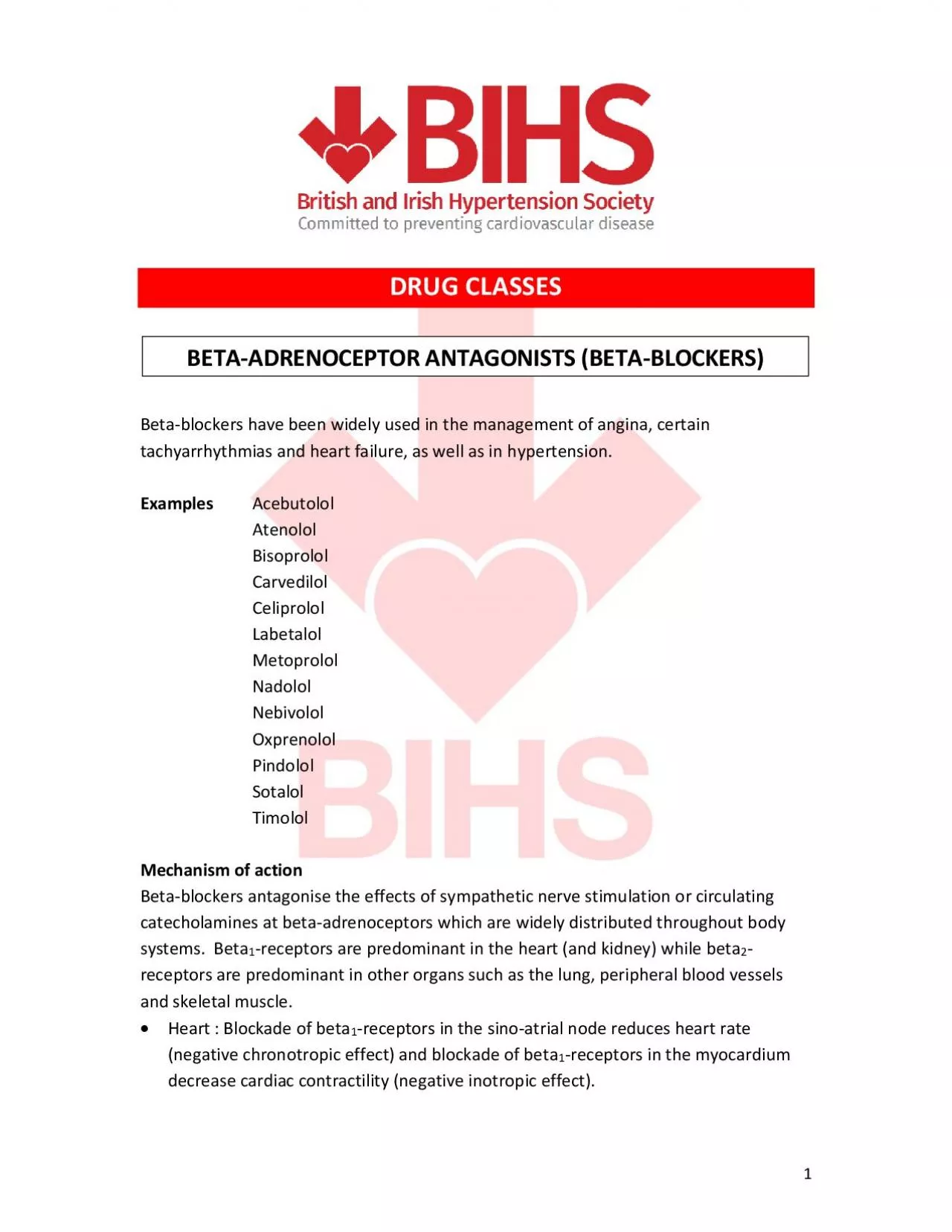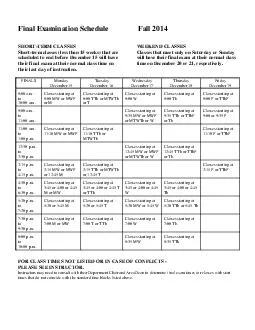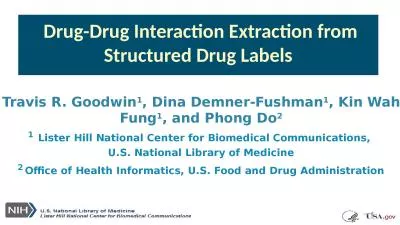PDF-DRUG CLASSES
Author : hazel | Published Date : 2022-08-16
1 Beta blockers have been widely used in the management of angina certain tachyarrhythmias and heart failure as well as in hypertension Examples Acebutolol Atenolol Bisoprolol Carvedilol Celip
Presentation Embed Code
Download Presentation
Download Presentation The PPT/PDF document "DRUG CLASSES" is the property of its rightful owner. Permission is granted to download and print the materials on this website for personal, non-commercial use only, and to display it on your personal computer provided you do not modify the materials and that you retain all copyright notices contained in the materials. By downloading content from our website, you accept the terms of this agreement.
DRUG CLASSES: Transcript
Download Rules Of Document
"DRUG CLASSES"The content belongs to its owner. You may download and print it for personal use, without modification, and keep all copyright notices. By downloading, you agree to these terms.
Related Documents














